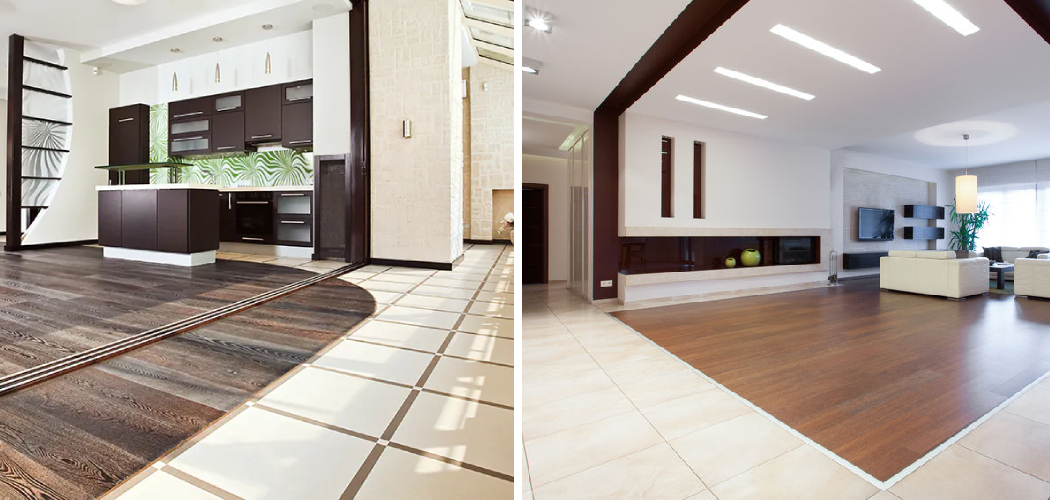Are you looking to create a unique and stylish floor in your home? Combining tile and wood flooring is an excellent way to bring together two different elements into a beautiful and functional space. Here are some tips on how to combine tile and wood flooring.
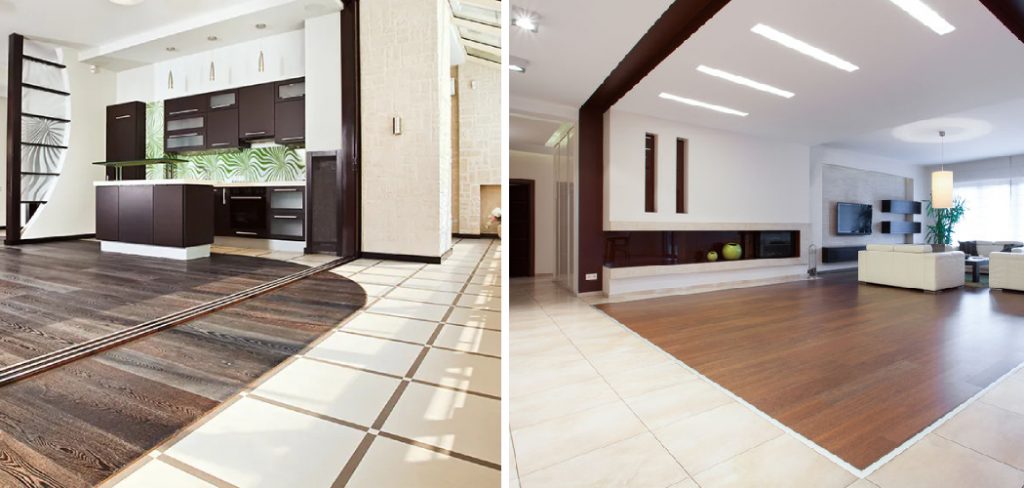
When it comes to interior design there are endless possibilities when it comes to flooring. One interior design trend that is becoming increasingly popular is the combination of tile and wood flooring – allowing you to create stunning interiors with both classic and modern looks. However, creating a successful blend of tile and wood takes careful consideration to ensure that the results are aesthetically pleasing.
This blog post will provide helpful information outlining how you can combine tile with wood floors for stunning results!
What are the Benefits of Combining Tile and Wood Flooring?
Combining tile and wood flooring is a great way to create an eye-catching design that will add visual interest to any space. While both these materials have distinct looks, combining them in the same room can create a unique look that blends modern and classic elements for stunning results.
Tile flooring offers many benefits, including its durability, strength, low maintenance requirements, and wide range of designs and colors. On the other hand, wood flooring brings many advantages, such as its natural beauty and warmth. When you combine these two popular materials together, you get the best of both worlds – offering a stylish yet practical solution for your home’s floors!
What Will You Need?
The first step in combining tile and wood flooring is gathering the needed materials. You will require the following:
- Tile (ceramic, porcelain, or slate)
- Wood (solid wood or engineered)
- Subfloor material
- Grout
- Tools such as a saw and power drill for installation.
The size of the tile and the type of wood you choose will depend on the desired look you aim to achieve in your home.
10 Easy Steps on How to Combine Tile and Wood Flooring
Step 1. Design Considerations:
When combining tile and wood flooring, it is important to consider the overall design of your space. For instance, if you’re looking for something more modern, think about selecting tiles with a geometric pattern or sleek finish. If you prefer a classic style, opt for traditional wooden planks with smooth edges. Additionally, be sure to choose colors and materials that complement each other.
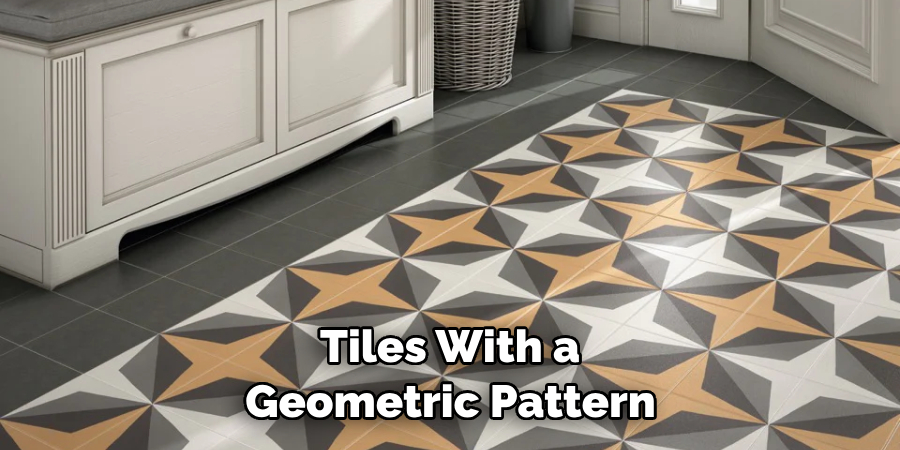
Step 2: Prepare the Area:
Before installation, it is important to prepare the area by ensuring the subfloor is clean and even. This will ensure that your tile and wood flooring are installed properly. You will need to level the subfloor with a self-leveling compound if there are any bumps or irregularities.
Step 3: Measure and Cut Tiles:
Once you’ve chosen and purchased your tile, measure out the area where you want to place them. Then cut them into the desired shapes using a saw or wet saw, depending on what type of tiles you chose. Be sure to follow any instructions included with the tiles for best results.
Step 4: Lay Out Tiles:
After cutting your tiles, lay them out in the desired configuration in order to visualize how they will look once installed. This is also a great time to mark where your grout lines will go. Be careful to avoid overlapping or leaving too much space between tiles.
Step 5: Install Tiles and Grout:
Now that you’ve laid out your tiles, it’s time to install them and grout in between the tiles as per instructions. Make sure to use a thin layer of adhesive when applying the tiles and be sure to follow all manufacturer instructions for best results. Once finished, allow the tiling adhesive to dry according to instructions before proceeding with the next step.
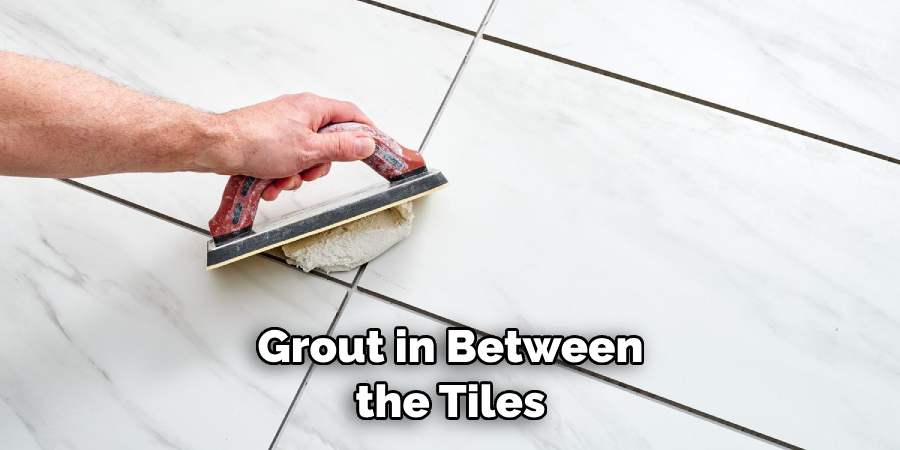
Step 6: Measure Out Wood Flooring:
After installing your tile, measure out the area for your wood flooring and cut it into the right size and shape using a saw. You can use either solid wood or engineered wood for this step. As with the tiles, if you’re using engineered wood, it is important to follow any instructions included for best results.
Step 7: Install Wood Flooring:
Once you’ve cut your wood flooring, it’s time to install it in the desired area. Make sure to use a power drill for best results, and be sure to follow any instructions included with the wood for installation. Keep in mind that you’ll need to leave a gap between the tile and wood flooring for expansion.
Step 8: Seal and Finish Wood Flooring:
After installing your wood flooring, you will need to seal it with a protective finish such as polyurethane or varnish. This will help keep moisture out and maintain its natural beauty while adding an extra layer of protection against dirt and grime buildup. Check the manufacturer’s instructions for specific recommendations when it comes to finishes.
Step 9: Add Rugs or Carpets:
If desired, you can also add rugs or carpets to the area in order to further enhance your design. Choose colors and patterns that complement the tile and wood flooring for a cohesive look. Ensure that all rugs and carpets are properly secured to the floor in order to prevent slipping.
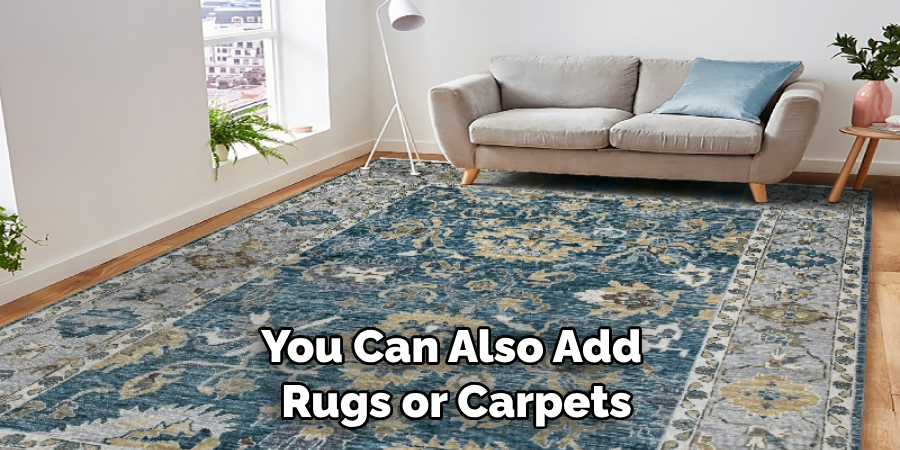
Step 10: Enjoy Your New Floors!
Once you’ve completed all of the above steps, it is time to sit back and enjoy your newly combined tile and wood flooring. With these tips on combining tile with wood floors, you can create unique spaces with an aesthetic mix of modern and classic elements – turning any room into a stylish yet practical space! Remember, with thoughtful design considerations, you can achieve stunning results that will last for years to come.
By following these steps, you can easily combine tile and wood flooring in your home for a hybrid look that is both stylish and functional. With the right materials and tools, you can create stunning floors with tile and wood – creating a one-of-a-kind interior design for your home.
5 Additional Tips and Tricks
1. Consider a transition strip. A transition strip is a thin piece of wood, metal, or vinyl used to bridge the gap between two different types of flooring. It disguises any sharp angles or lines from the tiles and wood, creating a more unified look to the flooring.
2. Use similar shades of tile and wood. It’s best to use colors and shades that complement each other when combining tile and wood flooring, as this creates a more cohesive appearance with fewer jarring transitions between different materials.
3. Look for patterns or textures that match up. When selecting your tile and wood flooring, try to find styles with complementary patterns or textures so that they appear to blend into one another easily in the eyes of your guests.
4. Lay the flooring in a herringbone or chevron pattern if possible. This creates an eye-catching effect and further masks any differences in materials between tile and wood.
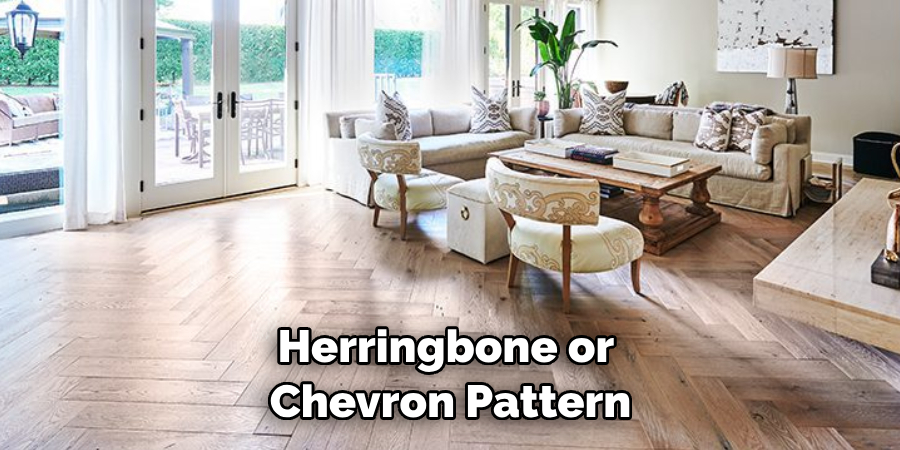
5. Utilize borders and accent tiles to draw attention away from the transition points. Borders and accent tiles can be used to create patterns and draw attention away from where tile meets wood, helping to create a more unified look overall.
By following these tips, you can successfully combine your tile and wood flooring into one beautiful, harmonious design! With the right selection of materials, colors, textures, patterns, and accents, you can craft a unique style that truly stands out – one that is both striking and timeless.
5 Things You Should Avoid
1. Avoid using contrasting colors. Colors that appear the same shade but are slightly off can disrupt the harmony of your design and draw attention to the transition point between tile and wood.
2. Don’t use materials that aren’t compatible with one another. Some types of flooring don’t work well when placed side-by-side, such as hardwood and laminate.
3. Avoid creating sharp angles or lines at the transition points between tile and wood. Sharp angles create a jarring effect when viewed from certain distances, which can detract from your overall design.
4. Too many patterns in one space can be overwhelming: try to keep things simple by selecting styles that have subtle differences rather than clashing patterns.
5. Don’t forget to use protective coatings and sealants on your tile and wood flooring. These protect your floors from damage, spills, and everyday wear and tear.

By avoiding the above pitfalls, you can create a stunningly beautiful combination of tile and wood flooring that will surely envy all your guests! With careful consideration and an eye for detail, you can craft a unique style perfectly suited to any room.
What Flooring Looks Good Next to Wood Floors?
1. Vinyl: Vinyl is a great choice to pair with wood flooring, as it comes in a variety of colors and finishes that can complement your existing wood floors. Plus, it’s easy to install and maintain!
2. Laminate: Laminate flooring is also an excellent option for pairing with wood, as its durability allows it to stand up to everyday wear and tear. Available in a range of colors and styles, laminate has the potential to add beauty and interest to any room.
3. Carpet: Carpet can be combined with wood flooring too! Just make sure you choose a color or pattern that will match the wood’s overall tone and style – this will ensure a cohesive look between the two different types of flooring.
4. Tile: Tile is an ideal choice if you’re looking to combine tile and wood flooring in one space. With its wide range of colors, patterns, and textures available, it can add an interesting contrast without detracting from the overall design.
5. Cork: Cork is another great option for pairing with wood floors as it has natural acoustic properties that make it perfect for soundproofing or reducing noise levels in a room. It may also help insulate your home from temperature changes when used in combination with wood floors!
Using any of these options will allow you to create a beautiful fusion of tile and wood flooring while adding unique style and character to your home. You can design a sophisticated and timeless look with the right materials, colors, and textures!
What Colors Go Best With Wood Floors?
1. Neutral Shades: Neutral colors like beige, taupe, white or gray create a timeless and classic look in any space. These shades will pair well with wood
flooring without overpowering the room’s overall design.
2. Deep Blues and Browns: Darker hues like navy blue or chocolate brown can contrast lighter-colored wood floors, creating an attractive color balance that is eye-catching and sophisticated.
3. Earth Tones: Natural colors like olive green, terracotta, ochre, and mustard yellow can bring out the natural beauty of wood floors while creating a cozy atmosphere in any room.
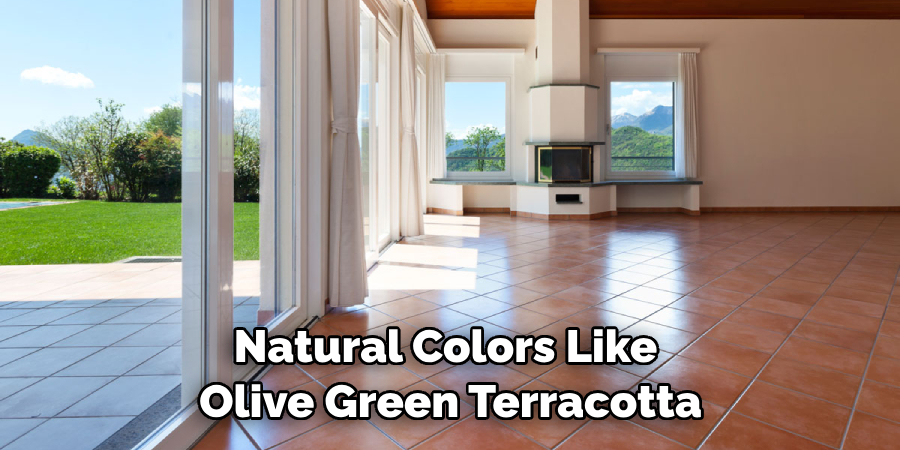
4. Bright Pops of Color: If you’re looking to make a statement, consider adding brighter shades like coral pink, turquoise blue, or emerald green into the mix. These colors can be balanced with complementary wood flooring tones to create an exciting yet cohesive look.
5. Muted Pastels: If you want something more subtle and soft, muted pastel shades like lavender, pale yellow, and mint green are great for adding a pop of color without being too overwhelming.
You can create stunning visual effects in any space by carefully selecting the right colors! With just the right combination of hues, you can combine tile and wood flooring together to form a unique and inviting style that will stand out from the crowd.
Conclusion
As you can see, there are a variety of ways how to combine tile and wood flooring. Combining these two materials can create an aesthetically pleasing overall look while meeting your practical needs. It’s best to plan out the layout in advance and consult with professionals if needed. When planning your design, great care should be taken to ensure that one material does not overpower the other.
While many factors go into designing tile-and-wood floors, it is still often possible to achieve a unique and beautiful look that fits both form and function.
With careful planning and attention, combining tile and wood flooring can greatly increase the aesthetic appeal of your home, making it much more enjoyable for all who enter.

